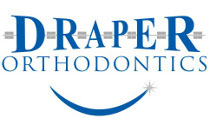Common Orthodontic Treatments
Why BRACES of course! That is what most people think of when it comes to orthodontic treatment, and although most patients do require orthodontic brackets the type and timing of a treatment plan can vary as widely as the type of common orthodontic problems can vary.
What type of treatment does my child need?
Orthodontic treatment plans are designed for completion in one phase or within two phases of treatment that include a maintenance phase between treatments. At Draper Orthodontics our treatment philosophy is correct everything possible in conventional or one phase of treatment. However when the orthodontic problem requires it Dr. Draper recommends two phases of orthodontic treatments. The first phase is designed to begin when the patient has reached the age of 7 to 9 years. During this phase, the normal completion time is between 12 and 18 months.
Phase I
Several treatments may be completed during this time period depending on the treatment goals.
Braces placed on the upper and/or lower incisors and molars
A palatal expander to widen the upper jaw
Face-mask treatment for severe underbite
Headgear treatment for protrusion and overjet
A functional appliance may be used to accelerate the growth of the lower jaw
Phase II (Conventional Treatment)
Should your child require phase I treatment, phase II will be begin following the eruption of all permanent teeth during the maintenance phase. For all others, conventional treatment will begin after all of the permanent teeth have erupted. Although the age of conventional treatment varies for boys and girls, it is typically initiated between 10-12 years old. Phase II/Conventional treatment is designed to last 18-24 months; however, the actual length of the treatment depends on the severity of the tooth irregularities, the age of the patient, patient compliance with at-home instructions, and the consistency of attending monthly appointments.
Dr. Draper and his team will make sure you or your child understand the orthodontic problems present and the treatment plan and appliances utilized to correct the problems.


